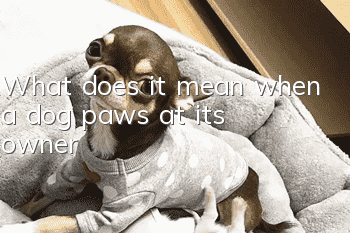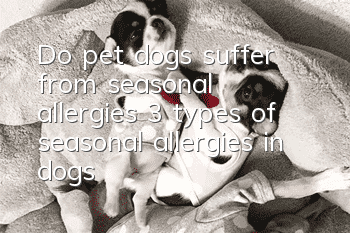How to tell if a Teddy dog is purebred?

Identify whether a Teddy dog is purebred
The other Teddy dogs are red toy poodles. They look very different in appearance, but that is just caused by the repair of their hair. When it comes to how to judge whether a Teddy dog is purebred, it can be understood based on the international AKC standard. AKC is the abbreviation of the American Kennel Club and the American Kennel Club. AKC is a non-profit organization dedicated to the cause of purebred dogs. It was founded in 1884 and consists of more than 530 independent kennel clubs across the United States.
1. Appearance Standards of Poodles For standard, mini, and toy poodles, the standards for all indicators are the same, except for height. Appearance, posture and condition The Poodle is a very active, alert and elegant dog breed, with good body proportions and vigorous movements, showing a confident posture. After traditional trimming and careful grooming, the Poodle will show its innate unique and noble temperament.
2. Size, proportion and body type Standard: Height at the shoulder exceeds 15 inches (38 cm). Any Standard Poodle 15 inches or less at the withers will be eliminated from competition. Miniature: 15 inches (38 cm) or less and more than 10 inches (28 cm) high at the withers. Any miniature poodle over 15 inches or less than 10 inches will be eliminated from competition. Toy: 10 inches (28 cm) or less at the withers. Any Toy Poodle over 10 inches will be eliminated from competition. The only criterion that distinguishes toys and minis is size. The body should be well proportioned and in satisfactory proportions so that the length from the sternum to the point of the tail is approximately the same as the height from the highest point of the shoulders to the ground. The bones and muscles of the front and rear legs should be in proportion to the dog's body.
3. Head and expression Eyes – very dark, oval in shape, with clever eyes, becoming the focus of intelligent expression. Major faults: round, protruding eyes, large or too shallow. Ears - Droopy ears set close to the head, with bases at or below eye level. The pinnae are long, wide, and covered with dense hair. However, the ears should not be too long. Head – Small, round, slightly protruding. The bridge of the nose, cheek bones and muscles are smooth, and the length from the occipital bone to the bridge of the nose is equal to the length of the muzzle. Muzzle – Long, straight and slender, with non-droopy lips. Slightly sunken under eyes. The lower jaw is of medium size, well defined and not tapered. Major Fault: Undefined lower jaw. Teeth – White, strong, scissor bite. Main defects: protruding mandible or overgnath, irregular teeth.
4. Neck, topline, trunk The neck is well proportioned, strong and slender. It is enough to support the head, showing its noble and dignified qualities. The fur on the throat is soft and the hair on the neck is thick. Smooth muscles connect the head and shoulders. Major fault: Ewe neck.The topline is level, neither sloping nor arched from the highest point of the shoulder blades to the base of the tail. There is only a slight depression behind the shoulders.
5. Trunk: The chest is wide and stretched. Flexible ribs. The waist is short and wide, strong, muscular and well-proportioned. The tail is straight, set high and carried upward. The truncated length is sufficient to support overall balance. Main defects: low position, curled, too far back.
6. Forebody: Strong, with smooth and strong shoulder muscles. The shoulder blades are fully closed and approximately as long as the upper part of the forelegs. Major Fault: Uneven, protruding shoulders. The forelegs are straight and parallel when viewed from the front. Viewed from the side, the forelegs are located directly below the shoulders. Ankles strong, dew toes may be clipped. The feet are small and egg-shaped, with the toes arranged in a fox-like shape. The pads on the feet are thick and strong. Toes are short but visible. The feet are oriented neither in nor out. Major Faults: Soft, separated toes.
7. The back half of the body and the front half of the body are balanced. Hind legs straight and parallel when viewed from behind. Muscles are generous. The stifle joints are strong, strong and well-curved; the femur and tibia are of equal length; the distance from the hock joint to the heel is short and perpendicular to the ground. When standing, the hind toes extend slightly beyond the tail. Major Flaw: Cow hock
8. Fur Quality – (1) Coarse: Natural rough texture, very dense fur. (2) Soft fur: compact, smooth hanging, varying lengths. It is longer on the chest, body, head and ears. The hair on the joints is relatively short and fluffy.
- Can dogs eat guava?
- Will dogs die if they get ascariasis without treatment?
- How long does it take for a dog to take a bath after external deworming?
- Is it okay if a dog is hungry for three days?
- What should I do if my dog has a fever? How to reduce the fever quickly?
- Do dogs need to be vaccinated?
- How to deal with eczema in Irish Canyon Terriers
- How to control your pet's weight after neutering?
- Will dogs not grow bigger if they don’t exercise?
- Get your dog’s “appetite” for you



